Phanteks P350X review: Quality, tempered glass and RGB at a great price
Ticking all the right boxes: lights, glass, flexibility, and affordability.
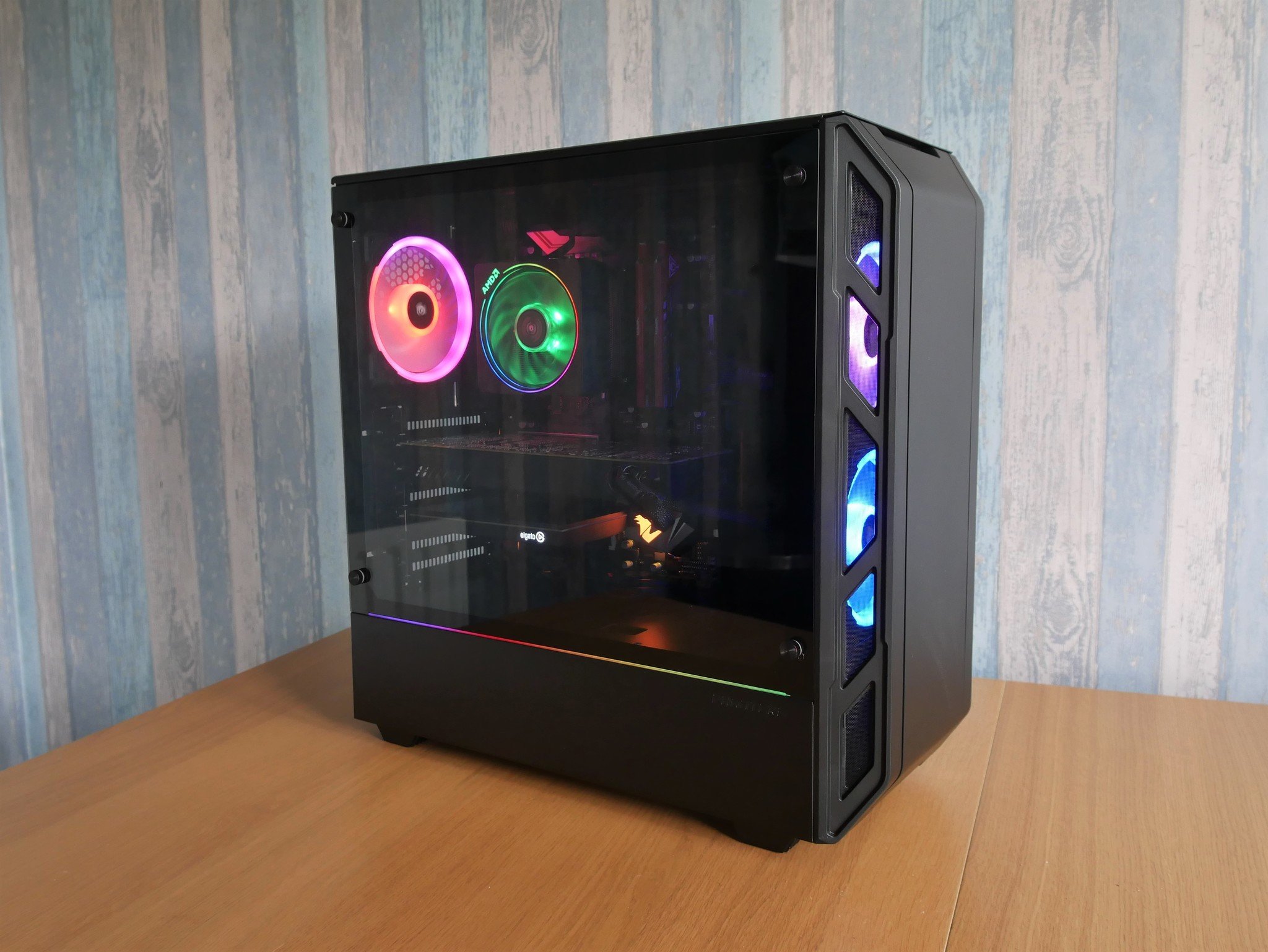

Getting the right case for your PC build is one of the most important decisions you can make. Not only do you want something that you like the look of, but you need to account for other more mundane things. How easy is it to build in, what's the cable management like, its airflow and so on.
On paper, the new Phanteks P350X ticks all the right boxes. It's a good looking mid-tower with a tempered glass side panel, a very attractive price of $75, supports full ATX motherboards, has pre-installed RGB lighting and has a ton of space to use for your build.
But does that translate into practice?
See at Amazon
Phanteks P350X: Style and quality
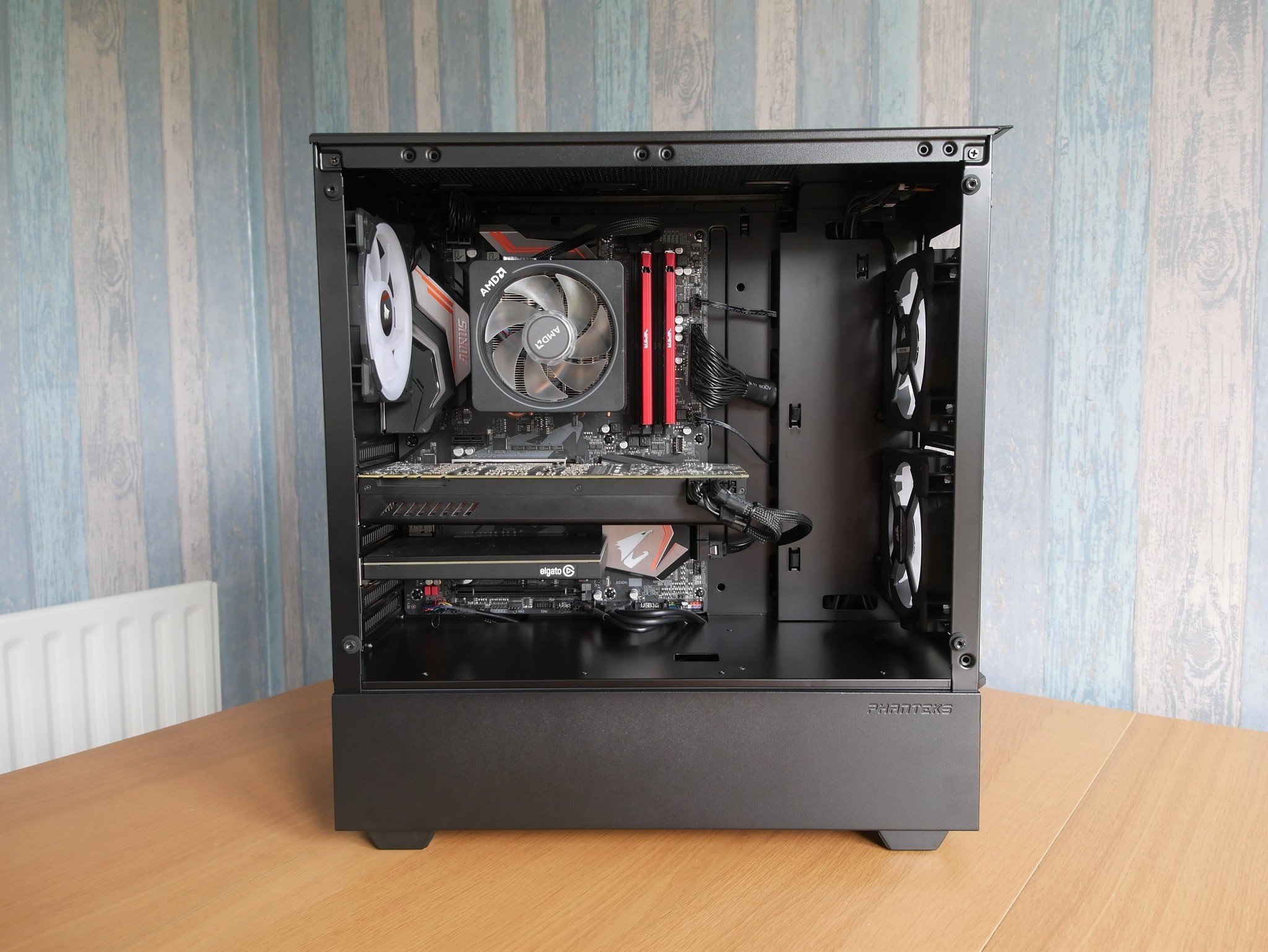
For a $75 case you'd expect some corners to be cut somewhere, especially once you consider what Phanteks has put into the P350X. But that's not the case. Or this case. Instead of corner cutting, you get clever design and construction.
This is a $75 PC case with impeccable build quality.
The PSU shroud is a single piece, not removable, and built into the chassis. This, in turn, reduces the size of the tempered glass side panel. And helps bring the price down.
The build quality is superb, too. There's no bare metal to be seen anywhere on the case, and while it's not excessively heavy, it's sturdy and feels well made. The one area where there's some slight flex is the rear where the metal is understandably thinner.
Get the Windows Central Newsletter
All the latest news, reviews, and guides for Windows and Xbox diehards.
Adding to the style are the RGB zones. The removable plastic front panel has a pair of thin RGB strips, while the very bottom edge of the glass side panel is clear to show through the strip built into the side of the case. You can cycle through effects with a button on the top of the case, or hook it up to some compatible third-party RGB systems to sync your build.
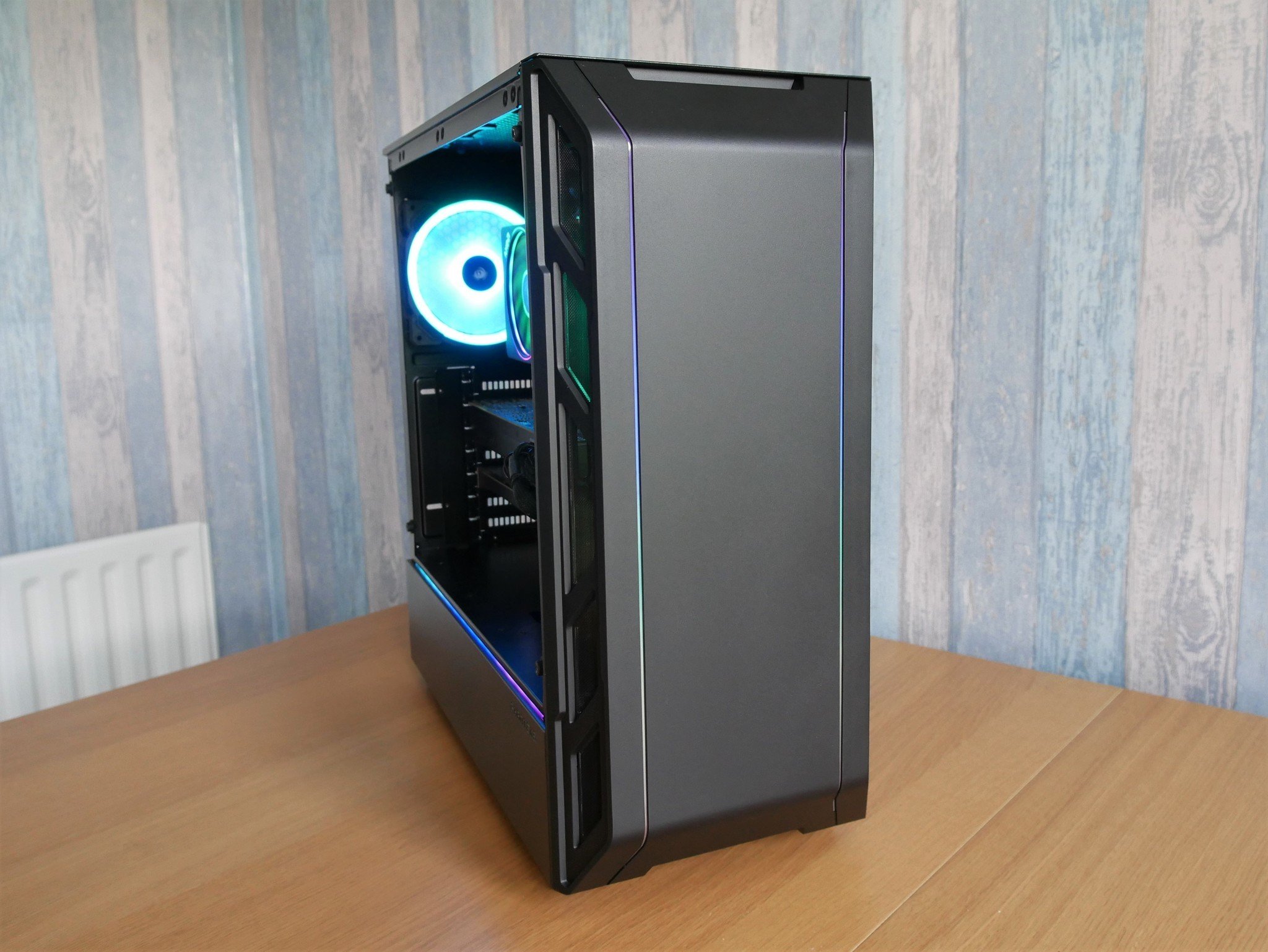
The sides of the front panel are mesh, promoting good airflow, and the front RGB strips don't require any extra cabling on your part.
The tempered glass panel ends up covering 3/4 of one side of the case and is attached with thumbscrews. The edges are black to hide the inside edges of the chassis and the only real downer is that the lugs it fits onto aren't very long. You generally need to hold the glass while attaching the first thumbscrew else it'll topple off at the slightest bump.
Front IO is a little disappointing, though. Besides the RGB control buttons, you get a 3.5mm headset jack for headphones and microphone and a pair of USB 3.0 ports. Another area to shave a few dollars off the price, but a couple more USB ports would have been nice to have.
Phanteks P350X: Mostly a dream to build in
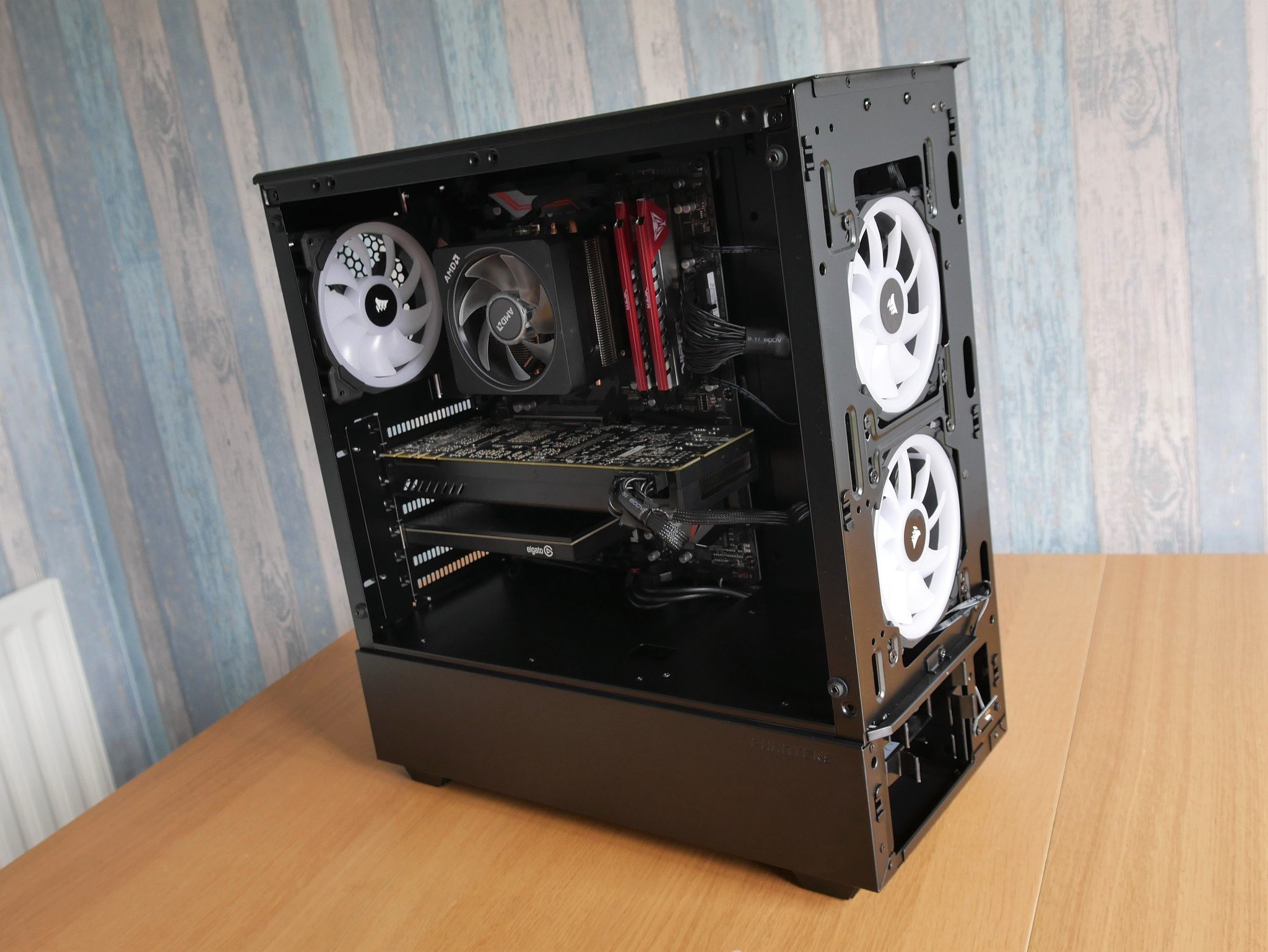
The P350X can accommodate a sizeable build despite being a fairly compact case. It supports ATX or even E-ATX motherboards, with room up front for a pair of 120mm or 140mm fans, or a 280mm radiator. Phanteks includes a single 120mm fan with the case, and you've space to use it on the rear. The top can also hold a pair of 120mm or 140mm fans with a magnetic dust filter on the top of the case.
Putting a custom water cooling setup into this case could prove challenging, but an all-in-one liquid cooler is just fine.
Whether you can use the top for fans will ultimately depend on what other hardware you're building with. I could probably squeeze a couple of 120mm fans inside with my build, but squeeze would be the word. If you have a motherboard with a shroud over the IO (I'm using the Aorus X470 Ultra Gaming board here), the rear 120mm fan will be pretty tight against it, and routing the cables through the backside of the motherboard tray will require patience and or small hands.
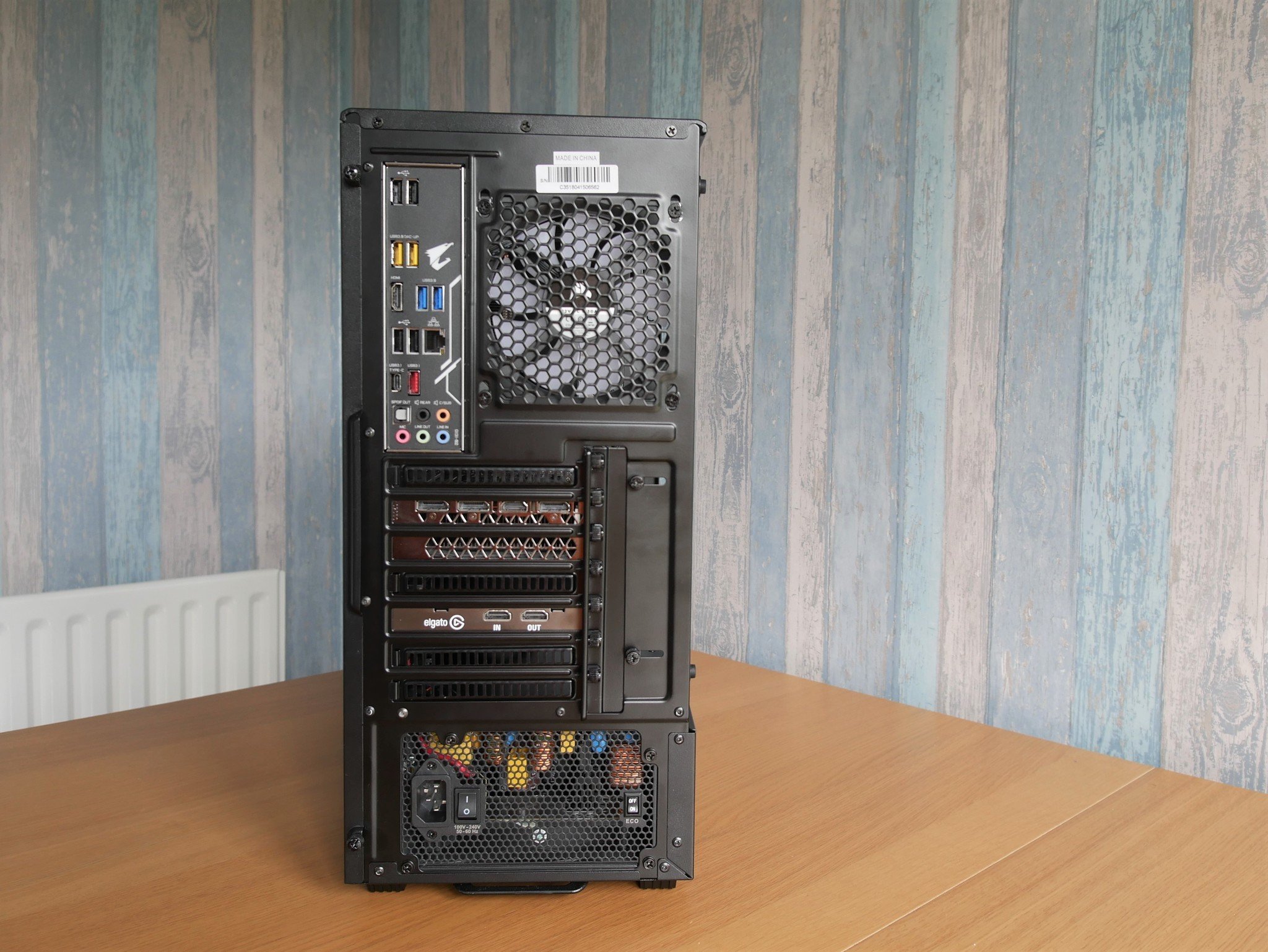
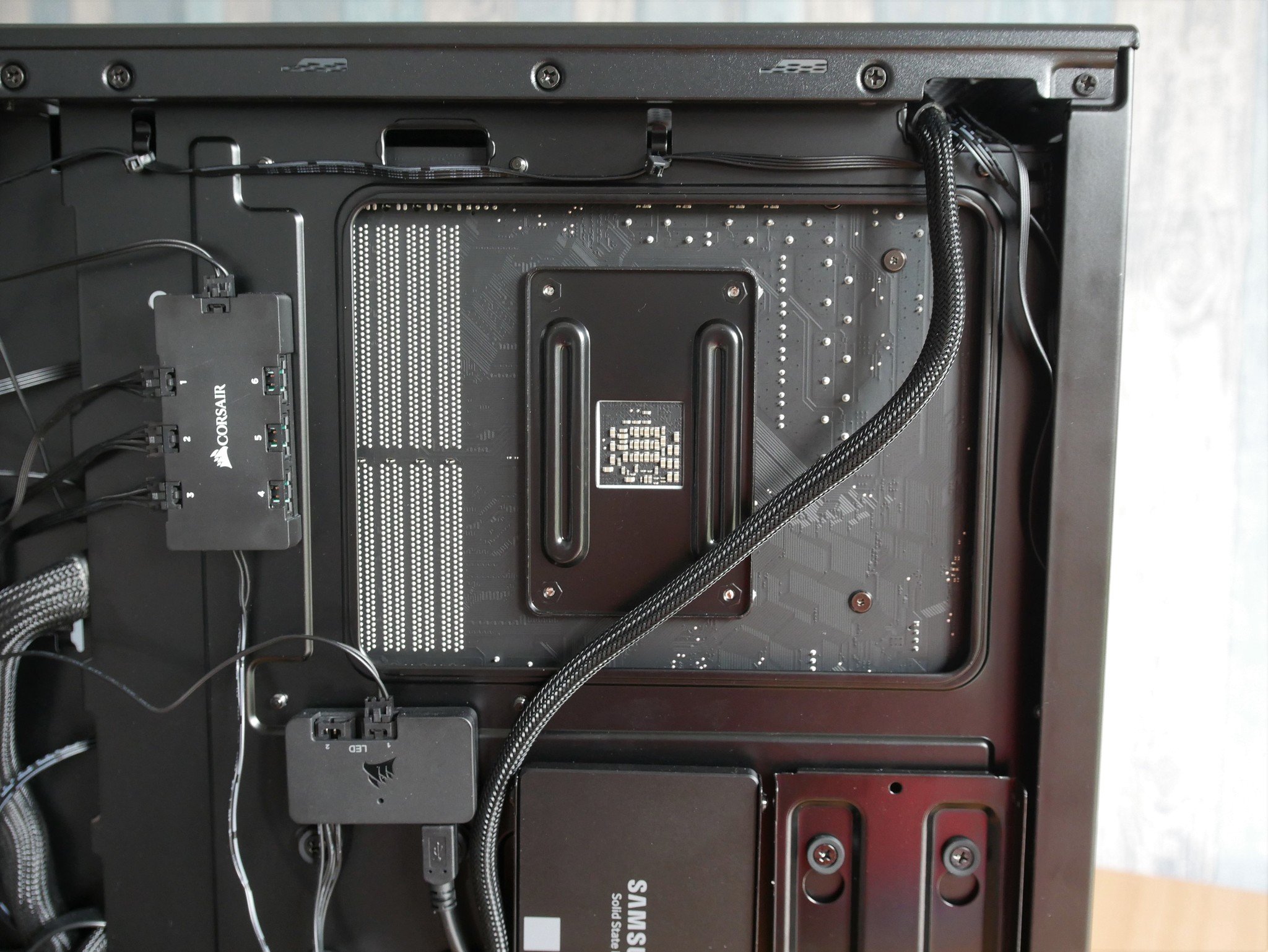
Things are a little snug at the front as well, mainly thanks to the design of the case. Directly behind the front portion is a cutout in the rear for cable management which protrudes a little then where the front fans are. You won't struggle to mount them, but you might have to be a little more creative with the cables. I ended up running the bottom fans through a cutout on the front. Not perfect, but perfectly serviceable.
You'll never be lacking space to tuck away those unsightly cables.
Snug fans aside though there's acres of space to work with inside the P350X. There's a hidden drive cage in the front for 3.5-inch and 2.5-inch drives, a pair of SSD trays attached to the back of the motherboard tray, ample points for cable ties and a fairly large channel to route cables down. If you're so inclined, it's not too difficult to get everything super neat, and if you're using a shorter power supply there's a nice big empty space in the basement to bundle up some of the excess.
Out front, the P350X has no problem accepting even the longest graphics cards and you get plenty of cutouts to route cables through from the rear. My one minor critique is that the top left cutout is covered up a little by an ATX motherboard, so it's probably wise to run the necessary cables through first.
Phanteks P350X: The bottom line
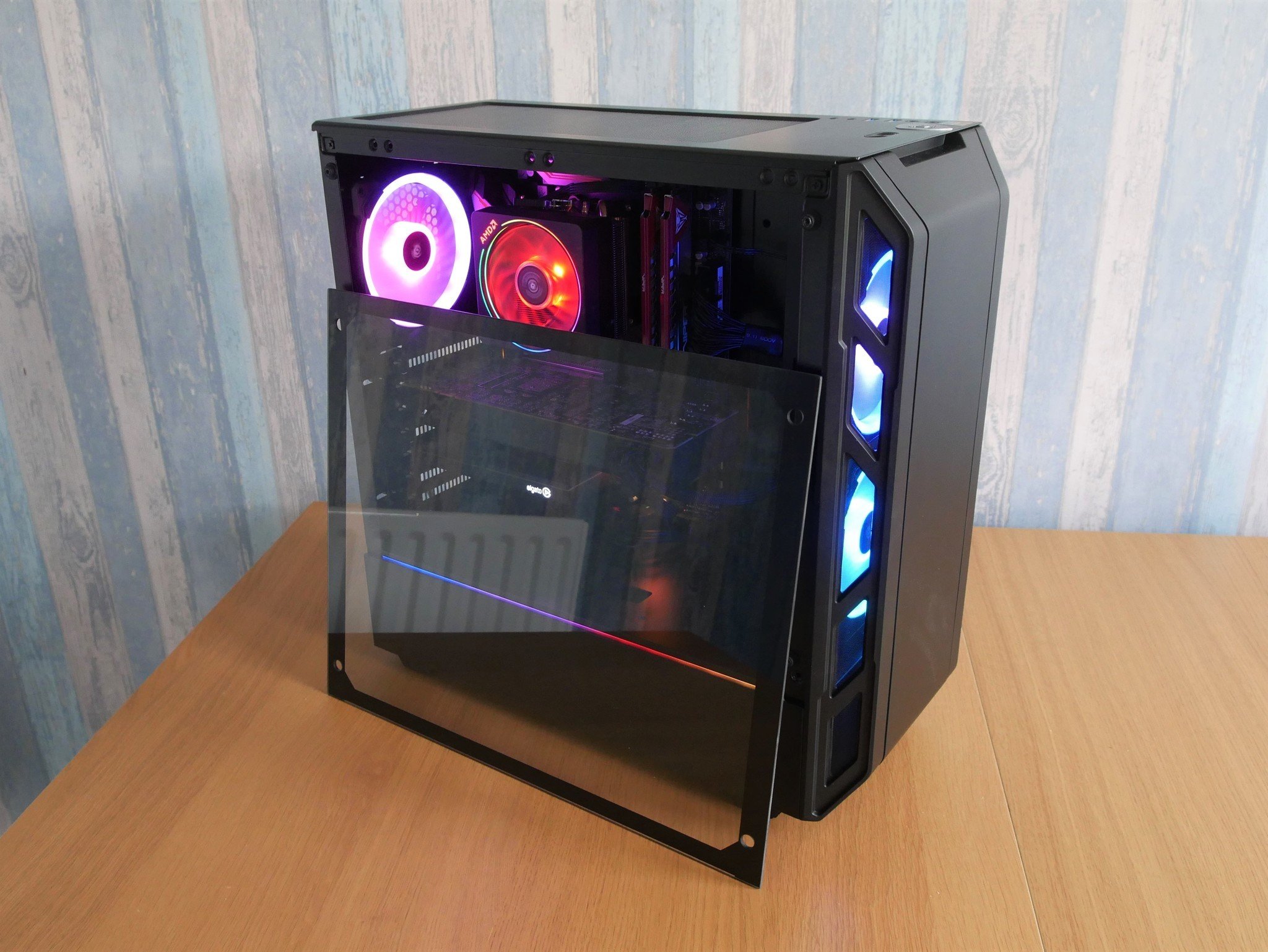
As with some of its other cases, Phanteks has proved that you don't need to cut corners to make a top quality, appealing PC case for an attractive price.
Pros:
- Fantastic price.
- Tempered glass side panel.
- Excellent build quality and tool-free access.
- Good cable management.
- Looks great with integrated RGB.
Cons:
- Running fan cables can be awkward.
- Glass side panel could have better lugs to rest on.
- Front IO is a little disappointing.
What you get here without breaking the bank is an attractive mid-tower with acres of space to build in. Its faults are relatively minor in the grand scheme of things. It looks fantastic, has great airflow, and good cable management.
For $75 it's an absolute steal. A premium case without a premium price.

Richard Devine is a Managing Editor at Windows Central with over a decade of experience. A former Project Manager and long-term tech addict, he joined Mobile Nations in 2011 and has been found on Android Central and iMore as well as Windows Central. Currently, you'll find him steering the site's coverage of all manner of PC hardware and reviews. Find him on Mastodon at mstdn.social/@richdevine
